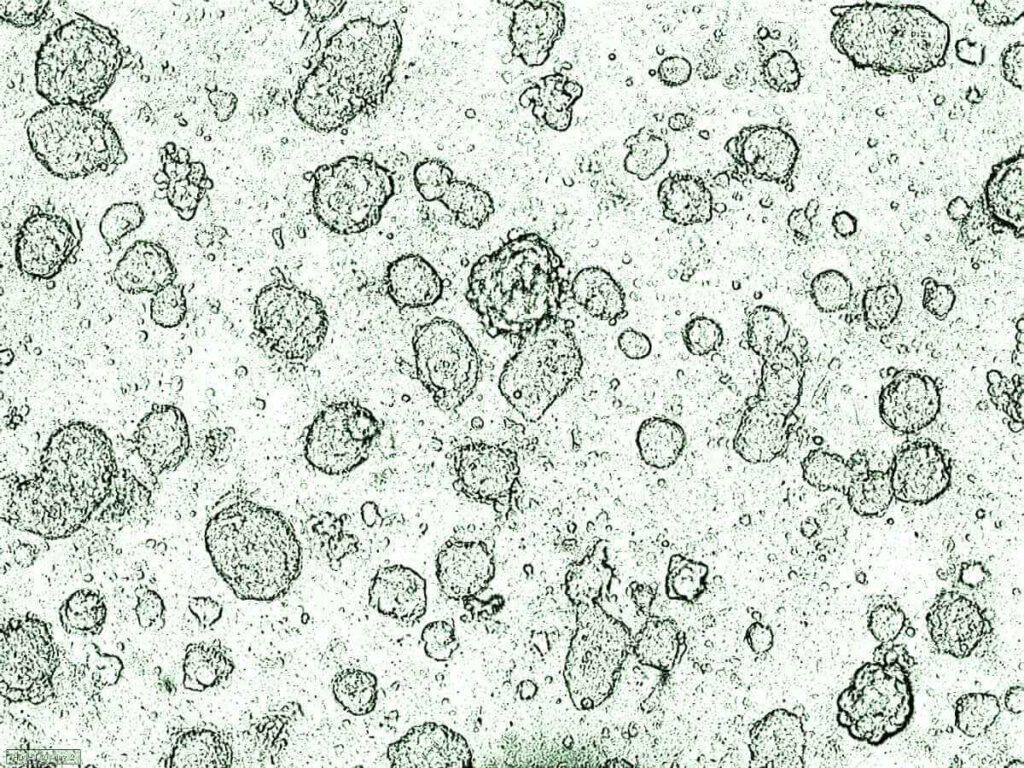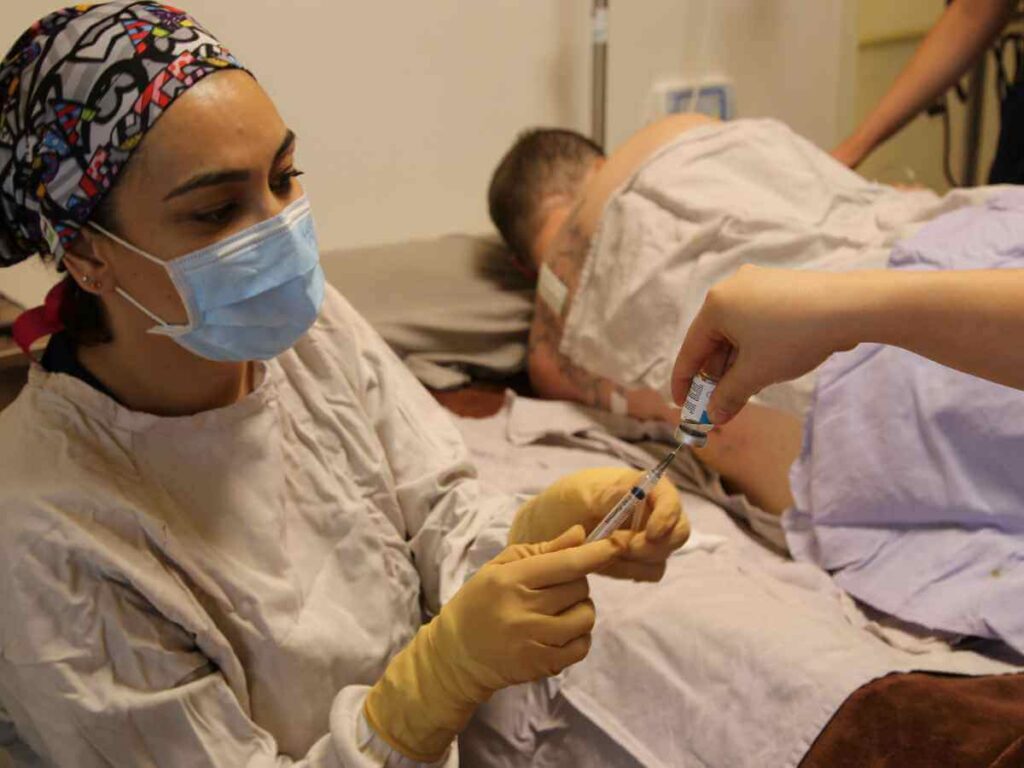Using stem cells for spinal cord injury treatment is a process which has been trialled for over a decade. Many patients have seen great success with stem cell implantation as part of Verita Neuro’s treatment, stem cells are used to improve sensory function and also help to improve the impact of the epidural stimulation treatment on motor function.
What are Stem Cells?
Stem cells are the basic building blocks of all natural tissues. Our life begins with a stem cell, that is, a fertilized egg which undergoes rapid growth. This egg then makes different subtypes of cell which ultimately grow into tissues. Moreover, all of our body tissues contain a certain population of stem cells which are used to repair damage caused by injury or illness. Stem cells play an important role in repairing tissue injuries by either differentiating into the required functional cells or by stimulating the growth of other cells.
Best Stem Cells For Spinal Cord Injury Treatment
There are a number of variations that can be found in stem cells. There are different types of cells and they can be sourced from various sources. When using stem cells for spinal cord injury treatment, it is often best to use Mesenchymal Stem Cells (MSCs). These are a type of adult stem cell which can differentiate into many different specialized cells including bone and cartilage, liver, kidney, neurons, glial cells (supporting cells in the nervous system), and skin. These cells can be derived from many different sources including adipose tissue, bone marrow, peripheral blood, umbilical cord, amniotic fluid and placenta.
The most commonly used MSCs are those derived from the umbilical cord. This is due to:
Another potential source of MSCs is the amniotic fluid. These cells are a more premature and primitive population of Mesenchymal Stem Cells. These cells possess certain properties which make them ideal for transplantation in certain neurological conditions.
The most commonly used MSCs are those derived from the umbilical cord. This is due to:
- Their relative prematurity, which makes them more likely to differentiate.
- The reduced risk of rejection, allergic reaction or Graft Versus Host Disease (GVHD).
- The higher quantities of MSCs in the umbilical cord compared to other sources.
- The lesser number of ethical issues involved with this source.
Another potential source of MSCs is the amniotic fluid. These cells are a more premature and primitive population of Mesenchymal Stem Cells. These cells possess certain properties which make them ideal for transplantation in certain neurological conditions.

How Mesenchymal Stem Cells Work
First and foremost, as established, they can differentiate into many cell types which replace dead or injured cells. They are also very good at doing this whilst retaining their capacity for self-renewal. This is significant in spinal cord injury treatment, where trauma has killed or injured tissue in or around the spine.
They also play a role in immune system regulation. MSCs produce molecules which are important within the immune response and healing. They have antimicrobial properties useful in killing microorganisms such as bacteria. They can regulate the whole immune system, helping to reduce inflammation, fibrosis (tissue scarring) and gliosis (changes in glial cells). They also help to initiate the repair process.
MSCs have paracine effects which means they help to regulate the action of other cells by releasing growth factors and cytokines. This promotes communication between cells and helps them to migrate towards the targeted site.
They also play a role in immune system regulation. MSCs produce molecules which are important within the immune response and healing. They have antimicrobial properties useful in killing microorganisms such as bacteria. They can regulate the whole immune system, helping to reduce inflammation, fibrosis (tissue scarring) and gliosis (changes in glial cells). They also help to initiate the repair process.
MSCs have paracine effects which means they help to regulate the action of other cells by releasing growth factors and cytokines. This promotes communication between cells and helps them to migrate towards the targeted site.

How Verita Neuro Uses Stem Cells For Spinal Cord Injury
We offer a tailored stem cell treatment plan depending upon each individual injury and medical condition. Verita Neuro uses Mesenchymal Stem Cells, sourced from the umbilical cord, as well as amniotic fluid stem cells. Our expert medical team can perform more targeted injections such as intrathecal (between the tissue) or intra-spinal cord transplantation. You can learn more about our stem cell treatment on our treatment page overview.
References
- Daikeler T, Hugle T, Farge D, et al. Allogeneic hematopoietic SCT for patients with autoimmune diseases. Bone Marrow Transplant 2009:[Epub ahead of print].
- Fang B, Shi M, Liao L, et al. Systemic infusion of FLK1(þ) mesenchymal stem cells ameliorate carbon tetrachloride-induced liver fibrosis in mice. Trans- plantation 2004:78:83–88.
- Togel F, Hu Z, Weiss K, et al. Administered mesenchymal stem cells protect against ischemic acute renal failure through differentiation-independent mechanisms. Am J Physiol Renal Physiol 2005:289:F31–F42.
- Augello A, Tasso R, Negrini SM, et al. Cell therapy using allogeneic bone marrow mesenchymal stem cells prevents tissue damage in collagen-induced arthritis Arthritis Rheum . 2007:56:1175–1186.
- Horwitz EM, Gordon PL, Koo WK, et al. Isolated allogeneic bone marrow-derived mesenchymal cells engraft and stimulate growth in children with osteogenesis imperfecta: implications for cell therapy of bone Proc Natl Acad Sci U S A 2002:99:8932–8937.
- Devine SM, Cobbs C, Jennings M, et al. Mesenchymal stem cells distribute to a wide range of tissues following systemic infusion into nonhuman primates Blood 2003:101:2999–3001.
- Tsai MS, Lee JL, Chang YJ, Hwang SM. Isolation of human multipotent mesenchymal stem cells from second-trimester amniotic fluid using a novel two-stage culture protocol. Hum Reprod. 2004 Jun:19(6):1450-6. doi: 10.1093/humrep/deh279. Epub 2004 Apr 22.
- Prusa AR, Marton E, Rosner M, Bernaschek G, Hengstschläger M. Oct-4-expressing cells in human amniotic fluid: a new source for stem cell research? Hum Reprod. 2003 Jul:18(7).
- Tsai MS, Hwang SM, Tsai YL, Cheng FC, Lee JL, Chang YJ. Clonal amniotic fluid-derived stem cells express characteristics of both mesenchymal and neural stem cells. Biol Reprod. 2006 Mar:74(3):545-51.






